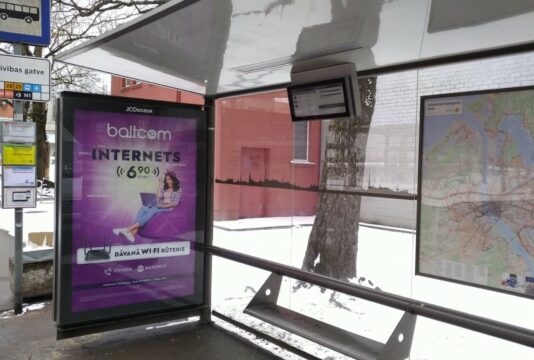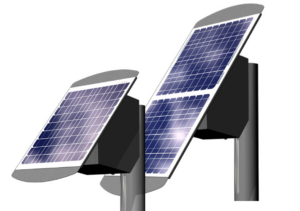
Rīgas Satiksme (Riga municipality public transportation) achieves significant cost and carbon savings with Papercast e-paper
Rīgas Satiksme is further enhancing the travel experience for Riga’s Public transport users with the second…

Welcome to the third in a series of blogs where we tackle the big questions we hear when we first discuss Papercast® as a solution. We started with energy efficiency and followed up with extreme climates, here we look at the different power supply options.
In summary, we offer 5 alternative power supply options. But before we get into that, some background on where this all started.
Setting the scene
Against the backdrop of the UN Sustainable Development Goals, cities all over the world are working hard to tackle urban congestion and pollution. With multi-faceted strategies in play, increasing public transport usage by making it more attractive and easy to use is a consistent theme.
Real-time passenger information plays an integral role in this. While it is commonplace in some cities to have basic ‘next bus’ digital displays, the majority of cities do not provide anything. Why? There are many socio-economic factors, but one of the main reasons is that it is not feasible to take a power supply to the majority of bus stops.
Enters Papercast solar powered e-paper displays
This is the exact reason why we developed and launched our solution. Not only is the shift to public transport contributing to smart city sustainability goals, but Papercast e-paper displays offer one of the most sustainable solutions.
E-paper technology is perfect for outdoor signage (due to its excellent sunlight visibility) and can be solar powered (due to its incredibly low power consumption). This means it can be installed anywhere and does not need a mains power supply (off-grid).
As one of Papercast’s initial differentiators, it goes without saying that our displays are predominantly supplied with a solar battery module. But due to its versatility, e-paper technology has attracted broader interest across and beyond the public transport sector. As a result, we are approached with varying requirements and location restraints which we always strive to fulfil.
So, what are the power supply options?
Ideal scenario: Locations where direct sunlight is available for more than 30% of the time!
 |
Papercast’s solar powered solution is designed to continually recharge the battery for long-term, sustained high performance. The modules come in two sizes, 20W or 40W, depending on the solar potential at each location. Even during the winter and in locations with up to 70% shading from the sun, the displays are still able to perform and maintain full battery charge. They can even operate for up to 20 days with zero sun. This is thanks to our proprietary hardware and software which has been engineered to the limits of power efficiency. |
Ideal scenario: Locations where solar is not viable
| In locations that do not benefit from direct sunlight (due to tall buildings or trees) or where solar panels do not meet aesthetic requirements, our long-life battery offers the best option.In this case, the rechargeable battery is replaced with a long-life battery that powers the displays for over 3 years. The battery levels are monitored in the Papercast Content Management System, and an alert system indicates when the battery needs to be replaced. |
Ideal scenario: Where mains electricity is available
| Papercast displays can be hard wired into mains electricity where accessible at the display location. We simply connect to any available permanent live feed, even if it’s a very low power source as the display system consumes less than a watt. While the mains power supply option does not meet the same sustainability criteria as our solar or battery powered options, it is worth noting that our displays are incredibly power efficient compared with traditional alternatives. |
Ideal scenario: Where street light power is available
| Papercast displays can be connected to existing street light infrastructure to continuously recharge and power the e-paper displays. The Street Light Module enables batteries to be charged while the street lights are activated. |
Ideal scenario: Where Power over Ethernet (PoE) is available
| Another power option is PoE. If a building or site already has a cabled ethernet system installed this can be repurposed to allow both data and power to be transmitted down the ethernet cable system to power the Papercast displays. |
Papercast prides itself on its sustainability, versatility and flexibility. By providing choice, we continue to offer a more sustainable solution with power source options that are not available with other, traditional digital display types.
Options 1 and 2 are completely standalone and wireless, providing a solution where electricity is not available or it is prohibitively expensive to dig up the road/pavements. In the case of options 3 and 4, we can repurpose existing infrastructure with minimal work required.
Check out the next blog in the series, Your big questions: How do Papercast® e-paper displays enhance accessibility?

Rīgas Satiksme is further enhancing the travel experience for Riga’s Public transport users with the second…

Papercast’s solar and battery-powered e-paper displays are built to last, even in the harshest of…